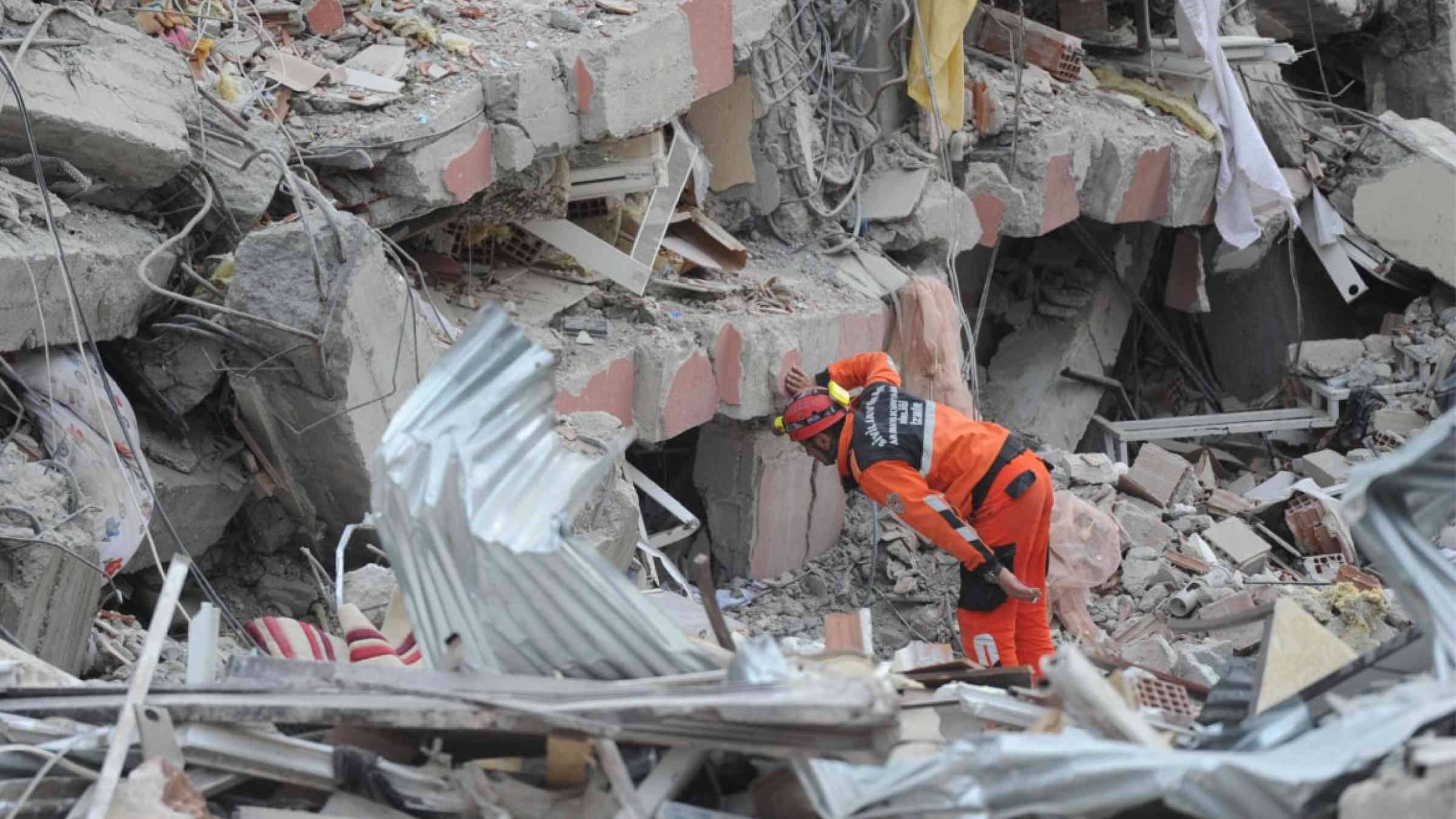What we learned about earthquakes in 2023

The past year was marked by earthquakes that hit countries all over the world. Türkiye, Morocco, Afghanistan and several other countries witnessed huge tremors that rocked their foundations. Their most vulnerable populations had to endure harsh conditions in the aftermath.
The PreventionWeb editors have been feeling for shifts and tremors in the world of earthquake risks to bring you the latest updates and cutting-edge research.
Here we offer you some of the key learnings we picked up about earthquakes in 2023:
1) Earthquakes can change the course of rivers
New research shows that when a fault deforms the earth’s surface, it can cause an overlying river to suddenly flood outside its established channel. This can put unsuspecting communities at risk.
In some cases, the sudden river shifts – also known as avulsion – may even cause the river to establish a new channel within the landscape.
Fortunately, with models used topographic data, we may now be able to predict these threats.
2) “Frostquakes” could present a new earthquake risk in the north
Frostquakes are seismic events caused by the rapid freezing of water in the ground. When water in the ground, accumulated during heavy rainfalls in autumn or melting of snow during warm winter weather, freezes and expands rapidly, it causes cracks in the ground, accompanied by tremors and booms.
They are most common during extreme winter conditions, when wet, snow-free ground freezes rapidly. They have been reported in northern Finland in 2016, 2019 and 2022, as well as in Chicago in 2019 and Ottawa in 2022, among others.
3) Climate change might trigger more earthquakes and volcanic eruptions
Research suggests that our changing climate may not solely influence hazards at the Earth’s surface. Climate change – and specifically rising rainfall rates and glacial melting – could also exacerbate dangers beneath the Earth’s surface, such as earthquakes and volcanic eruptions.
During the summer monsoon season, the weight of up to 4 metres of rainfall compresses the crust both vertically and horizontally, stabilising it. When this water disappears in the winter, the effective “rebound” destabilises the region and increases the number of earthquakes that occur.
Climate change could intensify this phenomenon. Climate models project that the intensity of monsoon rainfall in southern Asia will increase in the future as a result of climate change. This could feasibly enhance the winter rebound and cause more seismic events.
4) Safer and more resilient schools withstood the earthquakes in Türkiye
Since 2017, 57 schools have been built by the Turkish Ministry of National Education to be safer and more resilient to disaster, with support from the World Bank, GFDRR and the EU.
24 of these schools are located in areas affected by the February 2023 earthquakes and aftershocks and all withstood the disaster.
5) Long-term fault memory could make earthquake probability models more realistic
A Northwestern University research team of seismologists and statisticians has developed an earthquake probability model that is more comprehensive and realistic than what is currently available. Instead of just using the average time between past earthquakes to forecast the next one, the new model considers the specific order and timing of previous earthquakes.
It helps explain the puzzling fact that earthquakes sometimes come in clusters—groups with relatively short times between them, separated by longer times without earthquakes.
6) Seafloor fiber optic cables could be used in earthquake early warning systems
One of the biggest challenges for earthquake early warning systems (EEW) is the lack of seismic stations located offshore of heavily populated coastlines, where some of the world’s most seismically active regions are located.
In a new study published in The Seismic Record, researchers show how unused telecommunications fiber optic cable can be transformed for offshore EEW.
7) There is progress in AI-driven earthquake forecasting
A new attempt to predict earthquakes with the aid of artificial intelligence has raised hopes that the technology could one day be used to limit earthquakes’ impact on lives and economies. Developed by researchers at The University of Texas at Austin, the AI algorithm correctly predicted 70% of earthquakes a week before they happened during a seven-month trial in China.
The AI was trained to detect statistical bumps in real-time seismic data that researchers had paired with previous earthquakes. The outcome was a weekly forecast in which the AI successfully predicted 14 earthquakes within about 200 miles of where it estimated they would happen and at almost exactly the calculated strength. It missed one earthquake and gave eight false warnings.
8) The business community in Türkiye have valuable lessons to share
The Connecting Business initiative (CBi), the United Nations Development Programme (UNDP) in Türkiye, the United Nations Resident Coordinator Office (RCO) in Türkiye, the Turkish Enterprise and Business Confederation (TÜRKONFED), and the Business for Goals (B4G) platform organized a lessons learned workshop providing the following recommendations on improving disaster risk reduction:
- Integrating private sector coordination and establishing communication mechanisms that are aligned with relevant contingency and response plans by the Government would improve communication, resource tracking, and resource allocation during an emergency.
- Businesses should regularly conduct drills and assess potential risks to ensure practical readiness of business emergency management and continuity plans.
- Establishing a standardized approach to data collection, that includes all relevant actors, to better understand where resources are most needed and avoid waste and duplication.
Keep up with the latest findings about earthquakes
Japan had an earth-shaking start to 2024, with a 7.8 magnitude quake rocking its western coast. While the event was destructive, killing at least 57 people and causing widespread property damage, the country’s continuous investment in preparation and resilience meant that the damages were greatly reduced. This shows the value of building our knowledge base on managing risk and building resilience.
Stay tuned to PreventionWeb as our editors continue to collect the latest research and news about earthquakes and other seismic hazards.
You can find them right here: More PreventionWeb resources on earthquakes